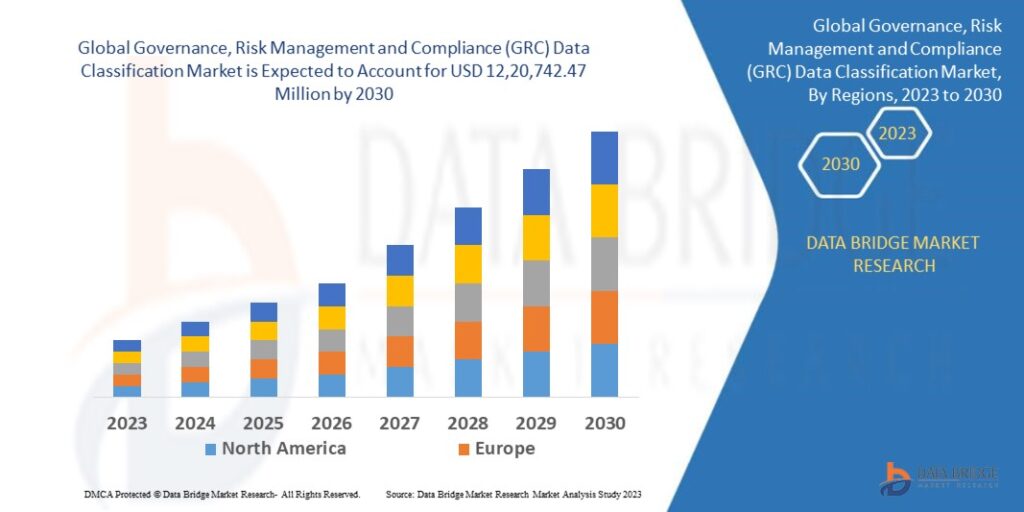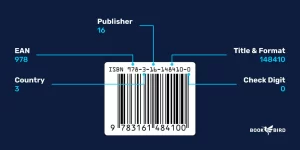Introduction
In today’s data-driven economy, organizations face mounting challenges related to cybersecurity threats, data privacy regulations, and internal compliance. Governance, Risk Management, and Compliance (GRC) solutions are evolving rapidly to meet these demands, and within this ecosystem, data classification plays a critical role.
Data classification refers to the process of organizing data into categories based on sensitivity and importance, enabling better management, protection, and compliance. As regulations like GDPR, CCPA, HIPAA, and others become more stringent, the GRC data classification market has gained significant momentum globally.
Market Overview
The global GRC data classification market was valued at approximately USD 1.2 billion in 2023 and is projected to reach USD 3.5 billion by 2030, growing at a compound annual growth rate (CAGR) of around 14–16%.
Organizations are increasingly investing in automated data classification tools as part of their broader GRC frameworks to ensure compliance with regulatory requirements, protect sensitive information, and enhance operational efficiency.
Key Market Segments
1. By Component
-
Solutions: Standalone classification tools, integrated GRC platforms
-
Services: Consulting, training, implementation, managed services
2. By Deployment Type
-
On-Premise
-
Cloud-Based (significant growth due to scalability and cost efficiency)
3. By Organization Size
-
Large Enterprises
-
Small and Medium Enterprises (SMEs)
4. By Industry
-
BFSI (Banking, Financial Services, Insurance)
-
Healthcare
-
Government
-
IT & Telecom
-
Retail & E-commerce
-
Manufacturing
-
Energy & Utilities
Market Drivers
1. Tightening Data Privacy Regulations
Regulations such as the General Data Protection Regulation (GDPR) in Europe, the California Consumer Privacy Act (CCPA) in the U.S., and other regional laws have pushed organizations to better classify and manage data to avoid non-compliance and hefty penalties.
2. Growing Cybersecurity Threats
With the rise in ransomware, phishing, and insider threats, organizations are increasingly relying on data classification to safeguard critical and sensitive information. Accurate classification enables the implementation of security controls based on the data’s risk level.
3. Shift to Remote and Hybrid Work Models
The widespread adoption of remote work during and post-pandemic has increased data movement across networks, cloud platforms, and personal devices. Data classification tools help secure data regardless of location or device.
4. Need for Better Risk Visibility
Integrating data classification into GRC platforms allows for greater visibility into organizational risks. This leads to more informed decision-making and enhanced risk mitigation strategies.
5. AI and Machine Learning Integration
Modern data classification tools are increasingly leveraging AI and machine learning to automate the classification process, reduce human error, and scale across massive data sets in real-time.
Market Challenges
1. Complex Implementation
Deploying a data classification system that works across different departments, data formats, and legacy systems can be complex and time-consuming.
2. Employee Resistance and Training Gaps
Without proper training, employees may misclassify data or bypass classification protocols. Changing employee behavior and instilling data governance practices can be difficult.
3. Integration with Legacy GRC Systems
Legacy systems may lack the APIs and architecture needed to fully integrate with modern data classification tools, slowing adoption and effectiveness.
4. Balancing Privacy with Accessibility
Overly strict classification may hinder data accessibility and collaboration, especially in large organizations. Finding the right balance between security and usability is a key challenge.
Regional Insights
North America
North America dominates the GRC data classification market, primarily due to the presence of major players and a strong regulatory framework. The U.S. leads in adoption, driven by compliance with SOX, HIPAA, CCPA, and other data privacy laws.
Europe
Europe follows closely, propelled by GDPR and growing awareness around data governance. Countries like Germany, the UK, and France are at the forefront of implementing classification tools.
Asia-Pacific
Asia-Pacific is the fastest-growing region. With increasing digital transformation and regulatory developments in countries like China, India, and Singapore, the market is expected to expand rapidly.
Latin America & Middle East
These regions are gradually adopting GRC and data classification solutions, particularly in the banking and government sectors, although budget constraints may slow full-scale implementation.
Key Players in the Market
The GRC data classification market features a mix of established software vendors and emerging startups. Major players include:
-
Microsoft Corporation (Microsoft Purview Information Protection)
-
IBM Corporation
-
Symantec (Broadcom Inc.)
-
Varonis Systems
-
Forcepoint
-
McAfee Corp.
-
Boldon James (HelpSystems)
-
Varonis Systems
-
Spirion
-
TITUS (Fortra)
These companies are continuously investing in R&D, cloud-based solutions, AI-driven automation, and compliance mapping to enhance their offerings and market reach.
Emerging Trends
1. Automation and AI
AI-powered classification systems are becoming the norm, enabling continuous monitoring, adaptive risk modeling, and contextual classification based on content and usage.
2. Zero Trust Architecture
Data classification plays a pivotal role in Zero Trust models by ensuring access decisions are based on data sensitivity and user identity.
3. Integration with DLP and CASB
Data classification tools are being tightly integrated with Data Loss Prevention (DLP) and Cloud Access Security Broker (CASB) solutions to enforce policies and protect cloud-based resources.
4. Unified Data Governance Platforms
There is a shift toward unified platforms that consolidate GRC, data classification, DLP, and access control to offer end-to-end data governance.
5. Focus on Unstructured Data
With over 80% of enterprise data being unstructured, modern tools are focusing on classifying emails, documents, chat logs, and other complex formats.
Future Outlook
As digital ecosystems become more complex and data becomes a more valuable and vulnerable asset, the demand for intelligent, scalable, and compliant data classification systems within the GRC framework will continue to grow.
In the next five years, we can expect:
-
Broader adoption of automated classification in mid-sized enterprises.
-
Greater regulatory pressure, leading to mandatory classification in highly regulated sectors.
-
Increased integration of classification tools into existing cloud platforms, productivity tools, and collaboration suites.
-
Development of industry-specific classification taxonomies and compliance mapping.
Conclusion
The GRC data classification market is becoming a strategic investment area for organizations striving to achieve compliance, manage risk, and protect sensitive information. With regulatory pressures mounting and cybersecurity threats escalating, data classification is no longer optional—it is essential.
As technologies advance and businesses continue their digital transformation journeys, the role of data classification within GRC will become even more critical, forming the backbone of proactive and resilient data governance strategies.
Get more Details





